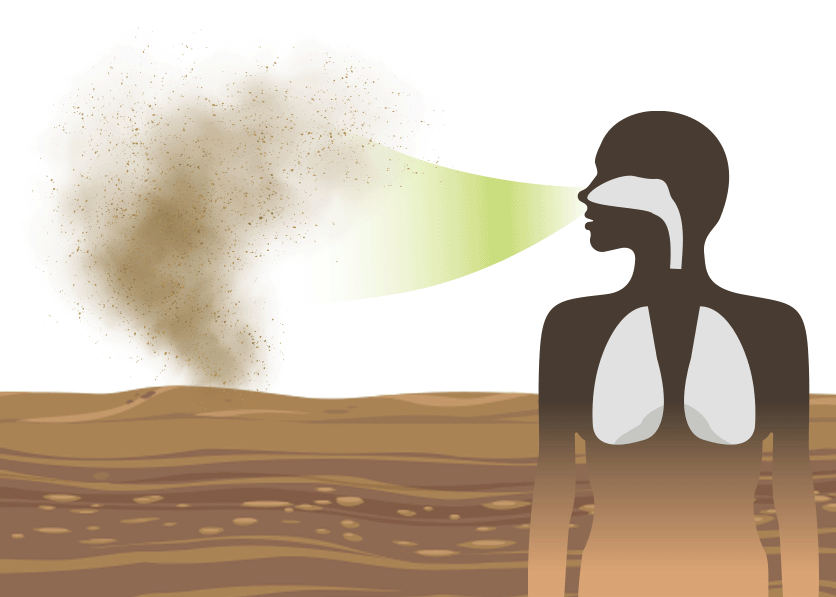Valley fever
Valley fever
The incidence of Coccidioidomycosis, commonly known as Valley fever, has increased over the past 20 years in California.
Valley fever is caused by a fungus in the soil in parts of the southwestern United States, including California. When the soil is disturbed, fungal spores can be released into the air. People and animals can become infected by breathing these spores into their lungs. Common symptoms of Valley fever are fatigue, cough, trouble breathing, fever, and chest pain. Cases are likely underdiagnosed, as symptoms are similar to many other respiratory illnesses, such as the flu and COVID-19. Drought, dry soils, and other climatic changes likely enhance the release of fungal spores and increase infections. For more information, download the Valley Fever chapter.
Coccidioides, the fungus that causes Valley fever, exists in soil and dirt. When airborne spores of the fungus are inhaled, people and animals can develop the disease.

Source: CDPH 2022
What does this indicator show?
Valley fever annual incidence rate by county, California, 2001-2021
This line graph shows the statewide incidence rate by year of estimated illness onset in California from 2001 to 2021*, as number of cases per 100,000 people.
Maps showing Valley fever rates from 2013-2018 (left) and in 2019 (right)
Source: CDPH 2020
-
In California, the incidence of Valley fever has increased almost fivefold from 2001 to 2021. The highest number of new cases was reported in 2019. Valley fever incidence has consistently been highest in the South San Joaquin Valley (Fresno, Kern, Kings, Madera and Tulare Counties) and parts of the Central Coast (San Luis Obispo County).
-
Despite the consistently high rates in the Southern San Joaquin Valley, substantial increases in 2019 occurred primarily in Northern San Joaquin Valley, and in the Central and South Coast regions.
Why is this indicator important?
-
Most people have mild symptoms from Valley fever and fully recover. However, up to five percent suffer illness when the infection has spread from the lungs to the skin, bones, and central nervous system. There is currently no vaccine to prevent Valley fever.
-
Each year in California, around 80 deaths and over 1,000 hospitalizations are attributed to Valley fever. Even milder disease can affect people’s ability to work and function well.
-
Tracking the incidence and geographic distribution of Valley fever provides valuable information to inform public health decisions, particularly given projected changes in climate-related factors.
What factors influence this indicator?
-
The majority of Valley fever outbreaks are associated with dirt-disturbing work settings, such as construction, wildland firefighting, and correctional institutions.
-
Drought, aridity, dust storms, winds, and wildfires create favorable conditions for the fungus to proliferate and be disseminated. These are all related to climate change and are projected to increase in frequency and severity.
-
Blacks and Filipinos, males, pregnant women, older adults, people with pre-existing health conditions, and low-income groups are at increased risk for severe disease.
Additional resources:
- California Department of Public Health, Valley Fever
- Centers for Disease Control and Prevention (CDC), Valley Fever (Coccidioidomycosis)
- UC Davis Health, Center for Valley Fever

